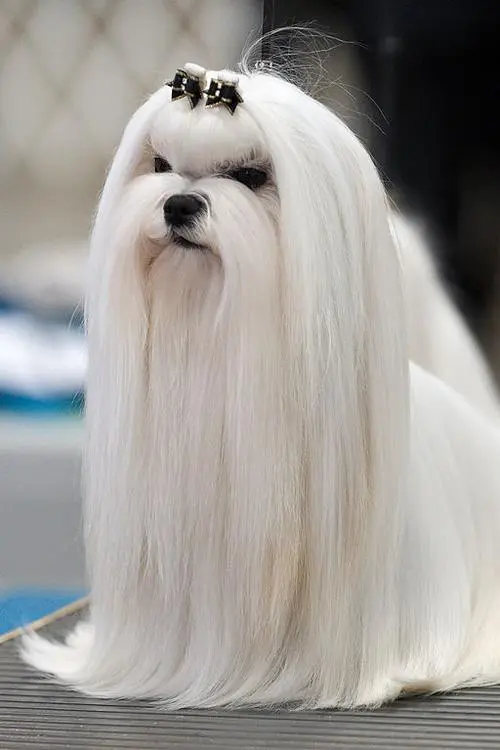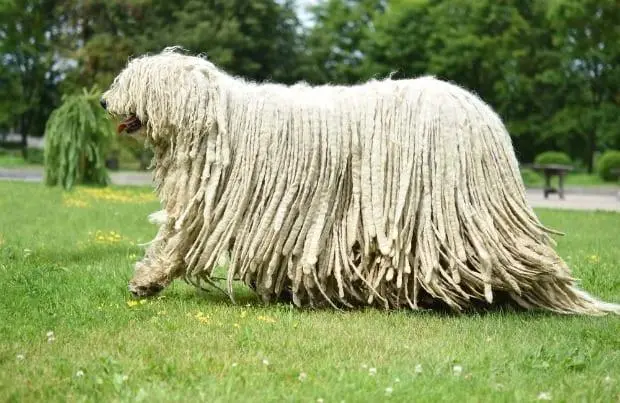Long-haired dogs are undeniably beautiful, but they come with their own set of grooming challenges. Whether you have a majestic Afghan Hound, a fluffy Shih Tzu, or a playful Golden Retriever, proper care is essential to keep their coat healthy and manageable. This guide will provide you with practical tips and personal insights on caring for a dog with long hair, reducing shedding, and handling hair loss.
Thank you for reading this post, don't forget to subscribe!
The Beauty and Challenges of Long-Haired Dogs
Long-haired dogs often have coats that are not only aesthetically pleasing but also require diligent care. Their fur can get tangled, matted, and can contribute to increased shedding around the house. However, with the right grooming routine, you can keep your long-haired dog looking their best.
Benefits of Long Hair:
- Aesthetic Appeal: Long-haired dogs are often considered more beautiful and elegant.
- Protection: Their fur provides protection from the elements, such as cold weather.
Challenges of Long Hair:
- Matting and Tangling: Without regular grooming, their hair can become tangled and matted.
- Shedding: Long-haired dogs tend to shed more, which can lead to a lot of hair around your home.
- Time-Consuming Grooming: Maintaining their coat requires regular brushing and grooming sessions.
Essential Grooming Tips for Long-Haired Dogs
To keep your dog’s coat healthy and reduce shedding, follow these essential grooming tips:
Regular Brushing
Frequency: Daily or at least 3-4 times a week.
Regular brushing is crucial for a dog with long hair. It helps remove loose hair, reduces shedding, and prevents tangles and mats from forming. Use a brush suitable for long hair, such as a slicker brush or a pin brush.
Bathing
Frequency: Every 4-6 weeks.
Bathing your dog helps keep their coat clean and free of dirt and debris. Use a gentle dog shampoo and conditioner to maintain the natural oils in their coat. Be sure to dry them thoroughly to avoid dampness that can lead to matting.
Trimming
Frequency: Every 6-8 weeks.
Regular trims help keep your dog’s coat manageable and reduce the risk of mats and tangles. You can do this at home or take your dog to a professional groomer.
De-shedding Tools
Invest in de-shedding tools like the Furminator, which are specifically designed to remove loose hair from the undercoat without damaging the topcoat. This can significantly reduce the amount of hair your dog sheds.

Personal Anecdote: A Grooming Journey with Max
I remember when I first got Max, my Golden Retriever with an incredibly thick and long coat. At first, I was overwhelmed by the amount of hair he shed. One day, I spoke with a fellow dog owner, Jane, who also had a long-haired dog. She shared her experience: “Regular grooming is the key. I brush Bella every day, and it has made a huge difference in reducing the shedding and keeping her coat shiny.” Taking Jane’s advice, I started a strict grooming routine for Max, and soon enough, I noticed a significant reduction in shedding and a much healthier coat.
How to Reduce Shedding in Long-Haired Dogs
Shedding is a natural process, but there are ways to minimize it:
Diet and Nutrition
A healthy diet plays a crucial role in the condition of your dog’s coat. Ensure they are getting a balanced diet rich in omega-3 and omega-6 fatty acids, which promote healthy skin and fur. Consider adding supplements like fish oil to their diet after consulting with your vet.
Hydration
Make sure your dog is well-hydrated. Proper hydration supports overall skin health and can reduce shedding.
Regular Vet Check-ups
Sometimes excessive shedding can be a sign of underlying health issues. Regular vet check-ups can help detect and address any health problems early on.
Handling Hair Loss in Long-Haired Dogs
Hair loss in long-haired dogs can be due to various factors, including allergies, parasites, or hormonal imbalances. Here are some steps to handle hair loss:
Identify the Cause
Consult your vet to determine the underlying cause of hair loss. This could range from allergies to more serious health conditions.
Treatment
Follow the treatment plan recommended by your vet. This might include medications, special shampoos, or dietary changes.
Grooming Adjustments
If your dog is experiencing hair loss, be gentle with grooming to avoid further irritation. Use soft brushes and avoid any harsh grooming tools.
Dealing with Dog Hair Around the House
One of the biggest challenges of owning a long-haired dog is managing the hair that ends up around the house. Vacuuming regularly is essential to keep your home clean and reduce allergens. Consider using a vacuum cleaner with a pet hair attachment or one specifically designed for pet owners.
Find products on our partner pages:https://houseappliancespro.co.uk/
Common Mistakes to Avoid
- Skipping Regular Grooming: Inconsistent grooming can lead to mats, tangles, and increased shedding.
- Using Human Products: Always use products specifically designed for dogs, as human products can be harsh on their skin.
- Overbathing: Too frequent baths can strip natural oils from their coat, leading to dryness and increased shedding.
Conclusion
Caring for a dog with long hair can be challenging but incredibly rewarding. With regular grooming, proper nutrition, and a little patience, you can keep your long-haired dog’s coat healthy, shiny, and beautiful. Remember, the key to managing shedding and hair loss is consistency and attention to your dog’s overall health. So grab that brush, put in a little effort, and enjoy the bonding time with your furry friend. Happy grooming!
